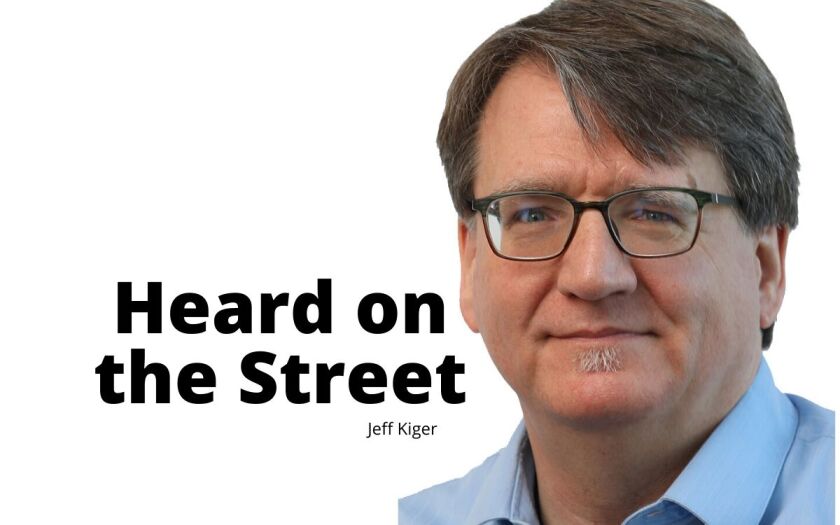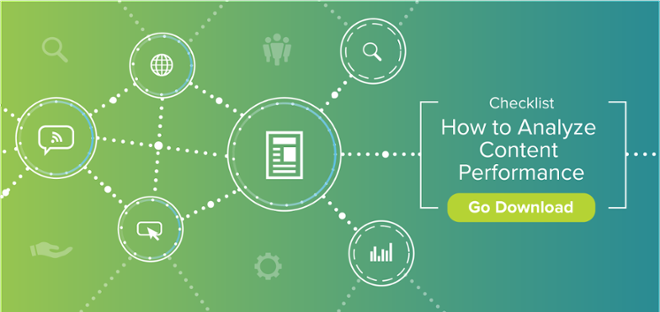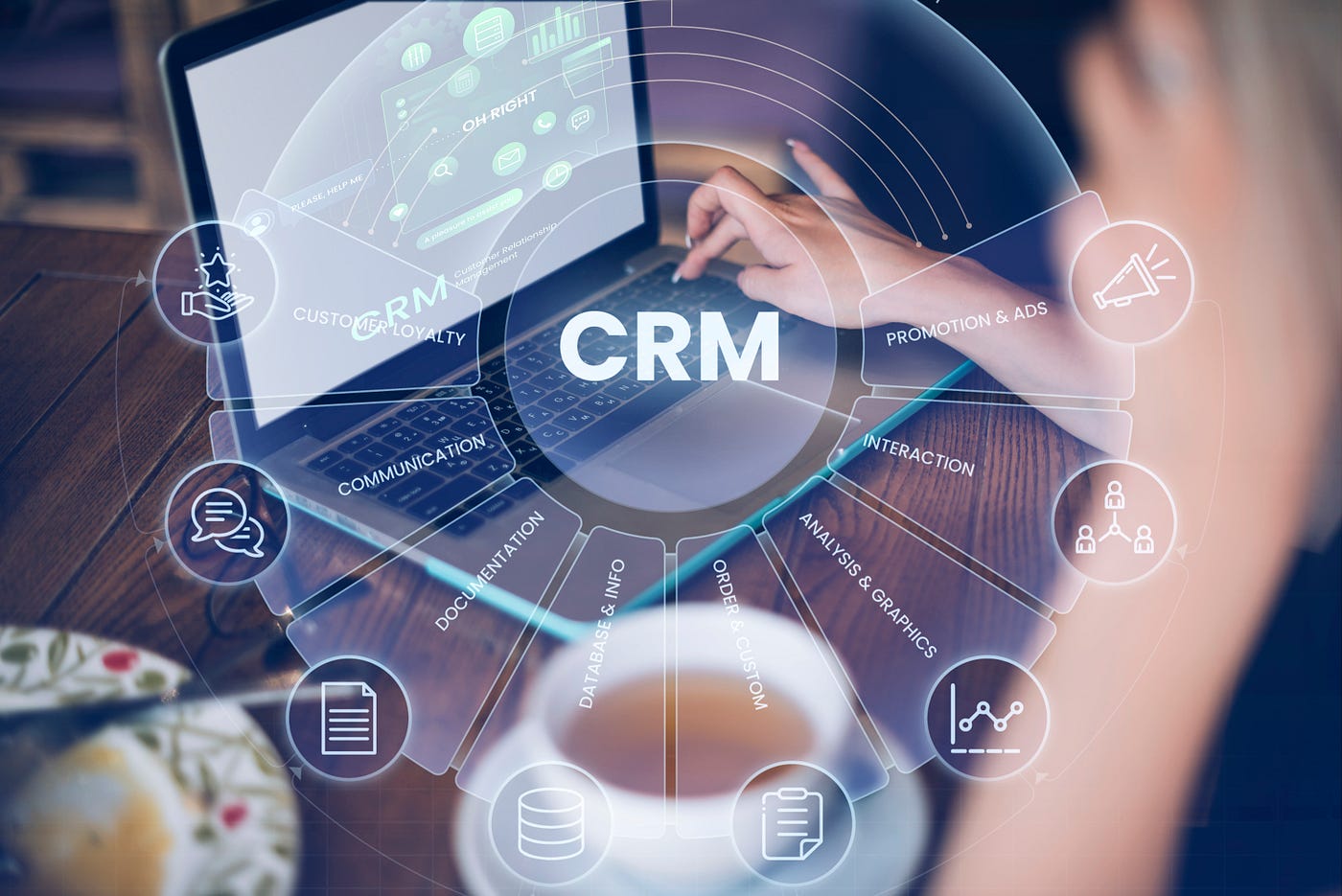Sales Pipeline Radio, Episode 316: Q & A with Elay Cohen @elaycohen

By Matt Heinz, President of Heinz Marketing
If you’re not already subscribed to Sales Pipeline Radio, or listening live every Thursday at 11:30 a.m Pacific on LinkedIn (also on demand) you can find the transcription and recording here on the blog every Monday morning. The show is less than 30 minutes, fast-paced and full of actionable advice, best practices and more for B2B sales & marketing professionals.
We cover a wide range of topics, with a focus on sales development and inside sales priorities. You can subscribe right at Sales Pipeline Radio and/or listen to full recordings of past shows everywhere you listen to podcasts! Spotify, iTunes, Blubrry, Google Play, iHeartRADIO, Stitcher and now on Amazon music. You can even ask Siri, Alexa and Google!
This week’s show is entitled, “Making Sales Enablement Stick“ and my guest is Elay Cohen, CEO at SalesHood
Tune in to hear more about how to create stickiness and effectiveness on a sales enablement platform while learning:
- how sales enablement requirements have evolved with the acceleration of digital
- how to infuse the buyer’s journey into a sales enablement system/program
- changing company culture and programs to increase that “stickiness”
Listen in now for this and MORE, watch the video or read the transcript below:
Matt: All right. Welcome everyone, to another episode of Sales Pipeline Radio. My name is Matt Heinz. I am your host and very excited to be here for another episode. We are at around 325 now, episodes of Sales Pipeline Radio over the last several years, and I’m happy to have you here. If you are watching and listening live on LinkedIn, or on Facebook, or YouTube, we’re very excited to have you here. If you are on LinkedIn watching live, you could be part of this show.
You can ask questions of our guests today. You can make comments. We’ll make you part of the show and make this inclusive and interactive. But thanks for being here if you’re watching on demand or listening to this through the podcast feed, thank you very much for downloading, subscribing, for watching all of our episodes past, present, future, always available at salespipelineradio.com, and every week we’re featuring some of the best and brightest minds in sales and marketing. Today is absolutely no different, very excited to have… Haven’t seen him in a long time, so excited to get to spend some time with CEO co-founder of SalesHood, Elay Cohen.
Elay: Great to be here, Matt, Elay Cohen from SalesHood. Love it. Thanks for doing this. I can’t believe 325 episodes. Look at you. It’s amazing.
Matt: It’s all about just showing up, man. I mean, it’s showing up and literally the key for me in doing that is just like 11:30 Pacific every Thursday, we do a show, it’s on the calendar. We book good guests and just make it happen.
Elay: Make it happen. And you are booked out!
Matt: So listen, I think I consider you one of the OGs of sales enablement. I mean, even back before that was a phrase, you spent seven plus years at Salesforce and a lot of that time was sort of running sales productivity.
And sort of that evolved into what is now a very robust sales enablement category. Maybe talk a little bit about your background, where you come from, and where then, almost 10 years ago now, you created SalesHood.
Elay: Well, I appreciate it and when I got tapped on the shoulder from Mark Benioff to lead sales enablement at salesforce.com, it wasn’t a thing. We spent eight years building out a lot of the processes, a lot of the best practices that we all are now living in. And so we anchored our program back then on some fundamental principles, which was, let’s get our teams aligned on messaging, let’s deliver a coaching and onboarding experience that’s personalized, but you know what, when I was at Salesforce, I had 120 people on my team back then.
I started thinking on the back end of my career, there’s got to be a better way. And so that was really the inspiration. I wanted to build a system that will enable companies to have best practices and enablement to scale all these enablement practices from learning, to coaching, to content sharing, to measuring outcomes, just when you think of scale, and it was incredible. We founded the company and there were only a few of us that were doing it way back when, and now… I did the math the other day, Matt, over $4.6 billion invested in all the companies in the sales category, just in the last three years.
Matt: It’s amazing. I distinctly remember having coffee with you in San Francisco, probably nine years ago, when you were getting it going and there was no sales enablement category.
Elay: Right.
Matt: I think what we did at Salesforce, seeing that someone needs to do a better job of training and enabling sales reps. They’ve got access to content, but it’s random, it’s ad hoc. It’s not scalable. Talk about… Now that we have this industry, and there’s a number of players that have followed your lead, like talk a little bit about stickiness of these platforms, because just like a lot of things, a lot of companies buy these tools, but they’re not always well used. How do you create stickiness and effectiveness of a sales enablement platform?
Elay: Yeah. So let me just start by saying, listen, when we founded the company, our vision, our mission was to create a purpose built all in one sales enablement platform that would deliver meaningful impact to sales and marketing leaders and to sellers and ultimately to buyers as well, because you want to have an experience.
There are a lot of companies out there that have pivoted from learning management systems, pivoted from CMS systems, content management systems, pivoted from conversation intelligence. These companies are all like, “Oh yes, we do sales enablement.” And so, in order for it to stick and in order for it to really, really drive the business outcomes, it needs to impact the right outcomes and that was our vision. When I think about how do organizations really get value? I love your question.
How do you make sales enablement stick? There is a proliferation of tools out there, but I’ll argue that there aren’t that many tools that were purpose built from the ground up, designed to be able to provide impact based outcomes to sales teams, the ability to personalize the learning experience and the content share and experience, and really provide an end to end workflow. That’s going to enable a sales professional to get their job done faster and more efficiently. We’ll go into some of the details, but on a kind of high level, those are some of the dimensions that I start thinking about when you ask me the question, how to make things stick?
Matt: Well, the environment has certainly changed a lot in the last several years and especially in the last couple years. As you have a lot of people that have been selling through inside sales teams, selling virtually, but now not just selling in a call center, but selling in their basement or from a coffee shop or wherever they are. How has the sales enablement needs evolved? I mean, it’s not really the pandemic didn’t create it. It sort of accelerated a trend that was already happening.
Elay: Absolutely.
Matt: When you have a more virtual distributed sales team, how has sales enablement requirements changed as part of that?
Elay: For sure. I’m going to tell you a story: Pre COVID when I would meet CEOs and CROs and CMOs, and we would talk about sales enablement, they’d look at me and they say, “You know what? I don’t really think we need a system for that. We can fly our people to Vegas and our reps, they’re our success folks, our account managers, they’re visiting people on site. We’re good. We don’t really need a system to automate and we don’t really think asynchronous collaboration and asynchronous learning is a thing. Don’t worry about it. We’re good.”.
Post pandemic, all of a sudden, the website started going off the hook. People are like, “Wait a minute, you enable teams to learn from each other, learn together, collaborate, asynchronously using video, using content sharing, and ultimately engaging with buyers like you do that whole workflow. Yeah, okay. We need that.”
That’s been the big change and I think everyone talks about the pandemic accelerating digital. The pandemic has absolutely accelerated digital for the sales community and for sales and marketing collaboration and ultimately for the buyer journey. And it’s why we invested in over the last two to three years, we really leaned into creating digital sales rooms and buyer sites, because ultimately, talking back to your question, how do you make sales enablement stick?
You’ve got to create impact and value for your teams. You’ve got to boost their confidence around what? Around the content that they’re going to be able, that they’re going to share with your buyers and that content now, isn’t just being shared in live. You’re going to share content asynchronously. You’re going to share content before a meeting. You’re going to share pre-videos, post video. Digital selling I think has really heightened the importance of a robust purpose built all in one sales enable platform, and not just like saying our LMS (our Learning Management System) can make it work, because it’s not going to solve the workflow, or your content portal, your CMS system, that’s not going to fly either so that’s why I’m like purpose built, man. It’s got to be purpose built.
Matt: First of all, we’re talking today with Elay Cohen, he’s the CEO co-founder of SalesHood and we’re talking about sales enablement and helping sales enablement platforms and initiatives stick. It’s interesting to see how categories are created and named, and how they put and how they sometimes feel like it limits what we think of them as. Marketing automation, not automated Account-based marketing, not just for marketing. Sales enablement? Yes, enabling sales teams, but there’s a buyer enablement component to this as well. Right?
Elay: Yeah.
Matt: Ideally the content and the tools and the efforts we’re doing to enable sales should be reducing friction and increasing viscosity on the buyer side, which is why I think the idea of sort of buyer sites and digital sales rooms is so interesting, because it’s really combining buyer and sales enablement together.
Elay: Yeah. I completely agree. I’m spending a lot of time thinking about the name. I do believe people are talking a lot about rev enablement. We’re seeing the rise of rev ops as well, but I recently looked at some of the trends and sales enablement is still on the rise, in terms of what people are ultimately wanted. In terms of a system to help reduce the friction, improve win rates, drive better buyer engagement, because ultimately we’re selling. Organizations, our sales teams, our customer success folks, our account managers, our partner channels, we are selling and the purpose of enablement, yes. Is to get people to buy. We want to help them make decision faster and the right decisions, but my prediction is, I think sales enablement will stick as the category name and sales enablement platform. There’s some other stuff we can talk about, but I’m not sure if that was your question. What were you thinking?
Matt: I don’t know. I think just knowing that, if enabling sales is about enabling buyers and I don’t mind calling it sales enablement, because if you’re just selling and selling in a seller-centric selfish way, you’re not going to sell a whole lot of stuff to begin with, right?
Elay: Right.
Matt: I think it’s part and parcel together.
Elay: I was going to add one comment. I think the big realization over the last two to three years, as we’ve really helped companies is taking the buyer journey and infusing it into the sales enablement system. So you’re onboarding, you’re ramping, you’re ongoing learning, you’re coaching, your content AI is all following a buyer’s journey. So ultimately, you’re really elevating the competence and confidence and content that your teams are developing as skills and the tools that they’re using. I think that’s really what the pandemic has really helped accelerate. It’s connecting those two. The other benefit is, you got sales and marketing alignment now.
Matt: Yeah.
Elay: If you got the buyer journey in the middle and you got a sales enablement system, that’s going to enable you to track it and enable your people develop to people. The one thing we haven’t talked about are the metrics and the analytics. The reason why companies today, they require a purpose-built all in one sales enablement platform, the reason is, it’s so hard to figure out what’s working, what’s not working. If you’re going to take a hodgepodge of systems, you’re going to take your learning management system, you’re going to take your content management system.
You’re going to take your a proliferation of tools that you’re going to try and stitch together at the end of the day, when your CMO and CRO are looking at each other, and they’re saying, “Okay, we roll up this new pitch. What impact did it have?” I don’t know. It’s hard to tell, but if you have one system and you know how your teams are learning, you know which ones are being accredited, you know what content is being shared. And I can look at rep profiles, team profiles. I can look at profiles by GL and I can look at the analytics and I can correlate it with leading indicators, like pipeline creation, a pipeline progression, then that’s the money shot for me. That answers the why and how you’re going to make this really stick. Back to your question.
Matt: Yeah. It makes it a cycle, right?
Elay: Yes.
Matt: You launch things that you get more specific and more strategic around what you create based on impacting the buying journey, based on most effective impact on sales. Sometimes you’re right. Sometimes you’re wrong. And so having an opportunity to measure and see that impact and to do that well, and for the companies we work with that are doing more complex motions, that are doing account based programs, that are enabling sales enablement systems. You can put a tool in place, you can write a playbook, but you got to think about the change management and culture management required to do that well. Can you talk about what you’ve seen with your customers that have been most successful at changing culture and changing programs so that this sticks?
Elay: Absolutely. All right. We’ve done a lot of work on this and a lot of thinking, and we’ve worked with some of the best companies like Sheevaun Thatcher from RingCentral, we’ve worked with Vernon Schmidt from Sage, and the list goes on and on, these are hyper confluent, like amazing company with amazing results. They come to us with similar challenges, the problems they want to solve are usually around growing faster, boosting attainment and creating culture. They want to create a learning culture, a coaching culture. They want to create a buyer-centric culture. And so, the way that we’ve helped them is we’ve not done a maturity model and a maturity model for sales enablement looks something like this. Let’s identify the core pillars in a companies go-to-market. Let’s sequence them out so that we’re not trying to do everything at once.
For example, universally, the number one thing, our customers come to us when they want to solve first, is conversation, competence and confidence. Let’s get our team aligned on the pitch, short pitch, long pitch, demo pitch, corporate pitch. There’s a number of those. That may take 30, 60, 90 days to roll out, get everybody aligned, get everyone practicing, getting them seeing each other’s pitches, creating a space where they can learn from each other and ultimately be better in their buyer conversations.
Boom, now I’ve done that. Awesome. Now let’s focus in on the next phase of the maturity. Let’s nail our sales execution. Let’s do sales process and sales plays. Amazing. Now let’s focus in on the next wave of maturity, which is product, competitive. What happens is, then you’ve got those three core pillars and you’re maturing your organization. You’re guiding everyone. You’re doing all the different roles. Then you can start tackling some of the bigger problems, onboarding and ramping, and then you can start really building out personalized learning paths and workflows for all your roles across your organization. That’s how organizations today are driving the change. So they can actually see the results and the impacts that they’re expecting on their sales enablement investments.
Matt: It’s premeditated. It’s progressive. You don’t have to do everything at once.
Elay: Yep.
Matt: But show some early wins, make it approachable and use that to build some momentum.
Elay: I love it.
Matt: I love that. So last question, we’ll let you go here today. So this is sales enablement, but there is selling and there’s renewing, right?
There is selling and there’s land and expand. So talk about the potential for platforms like SalesHood to really impact customer success and account management teams as well.
Elay: Right. And so, our customers today are using SalesHood across all of their customer facing roles. So SDR, BDR, AE, channel, customer success, account manager. And so, the beautiful thing with a sales enablement platform like SalesHood is when you’ve got the alignment and when you’ve got sales and marketing aligned, you publish content once. Whether it’s the messaging or whether it’s the product, the competitive, all your process information, all your tools, you create this library of content and then what you’re doing is you’re creating personalized learning journeys and then you’re identifying the specific leading indicators that you want to influence.
A system like SalesHood will say, “Listen, for an SDR, we’re going to measure calls made, voicemails. We’re going to measure email sent, contact touches, but for a CSM, we’re going to use a lot of the same content. It’s going to be customized though, for their role and tailored and sequence differently, but we’re going to look at a different system. We’re going to look at a gain site and we’re going to look at their QBR and the effectiveness of their QBR. When we look at their calls for verification of competence, we’re going to look for different keywords.” And so, it’s been really exciting to bring SalesHood to the broader customer facing organization, inclusive of partner channels as well. I think you and I both know the sales to CSM, it’s in this whole lead to renew, that’s the buyer’s journey, right?
Matt: It is.
Elay: Lead to grow.
Matt: It is. And when we think not just about buying journey, we think about just overall prospect and customer experience.
Elay: It’s the customer experience.
Matt: What happens with continuity in message and approach, not just from what you hear at sales, but what you hear once you’re a customer and ongoing, super important. Well, I know you’re busy man. We’re going to let you go. Elay Cohen, co-CEO co-founder of SalesHood, saleshood.com. Thanks, man. Thanks, good to see you.
Elay: Hey man, thanks for having me on the show. I really appreciate it and congrats to you.
Matt: Thanks so much. You too. Thanks everyone for watching and listening. Another episode of Sales Pipeline Radio. We’ll see you next week, Thursdays 11:30 Pacific, 2:30 Eastern. My name is Matt Heinz. We’ll see you next week. Sales Pipeline Radio.
Listen to the Latest Episodes:
 I interview the best and brightest minds in sales and Marketing. If you would like to be a guest on Sales Pipeline Radio send an email to [email protected]. For sponsorship opportunities, contact [email protected]
I interview the best and brightest minds in sales and Marketing. If you would like to be a guest on Sales Pipeline Radio send an email to [email protected]. For sponsorship opportunities, contact [email protected]








